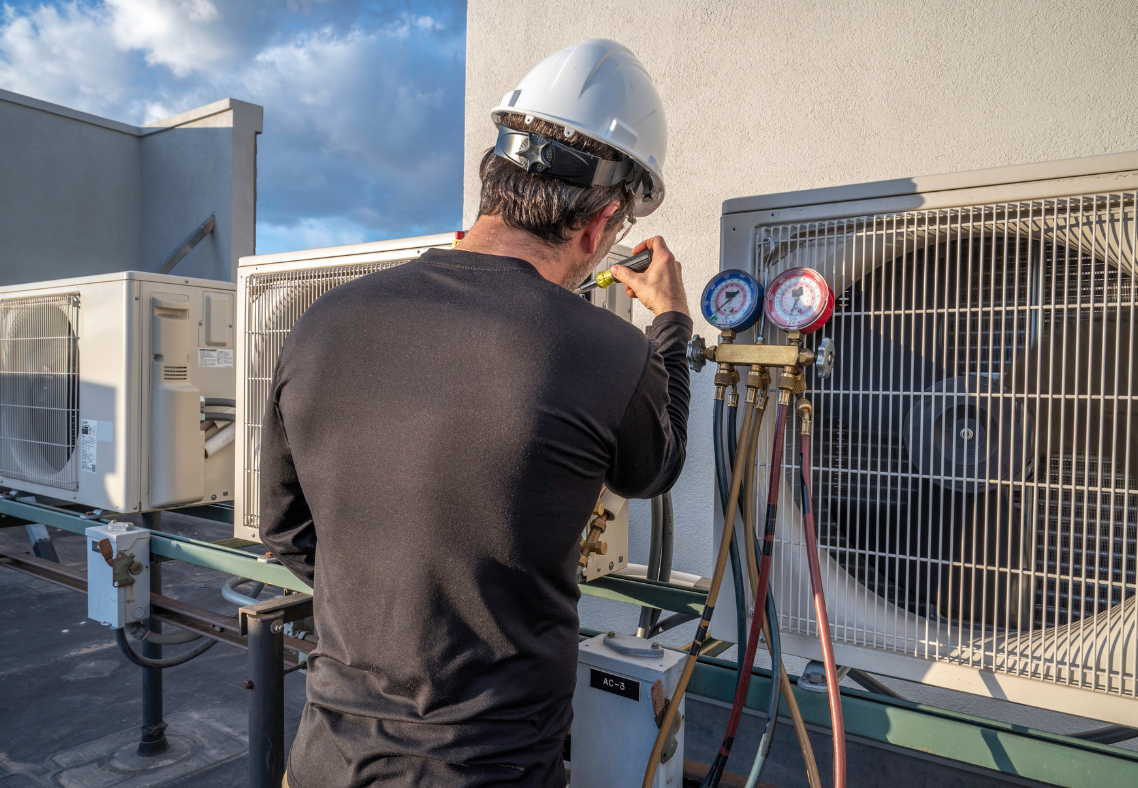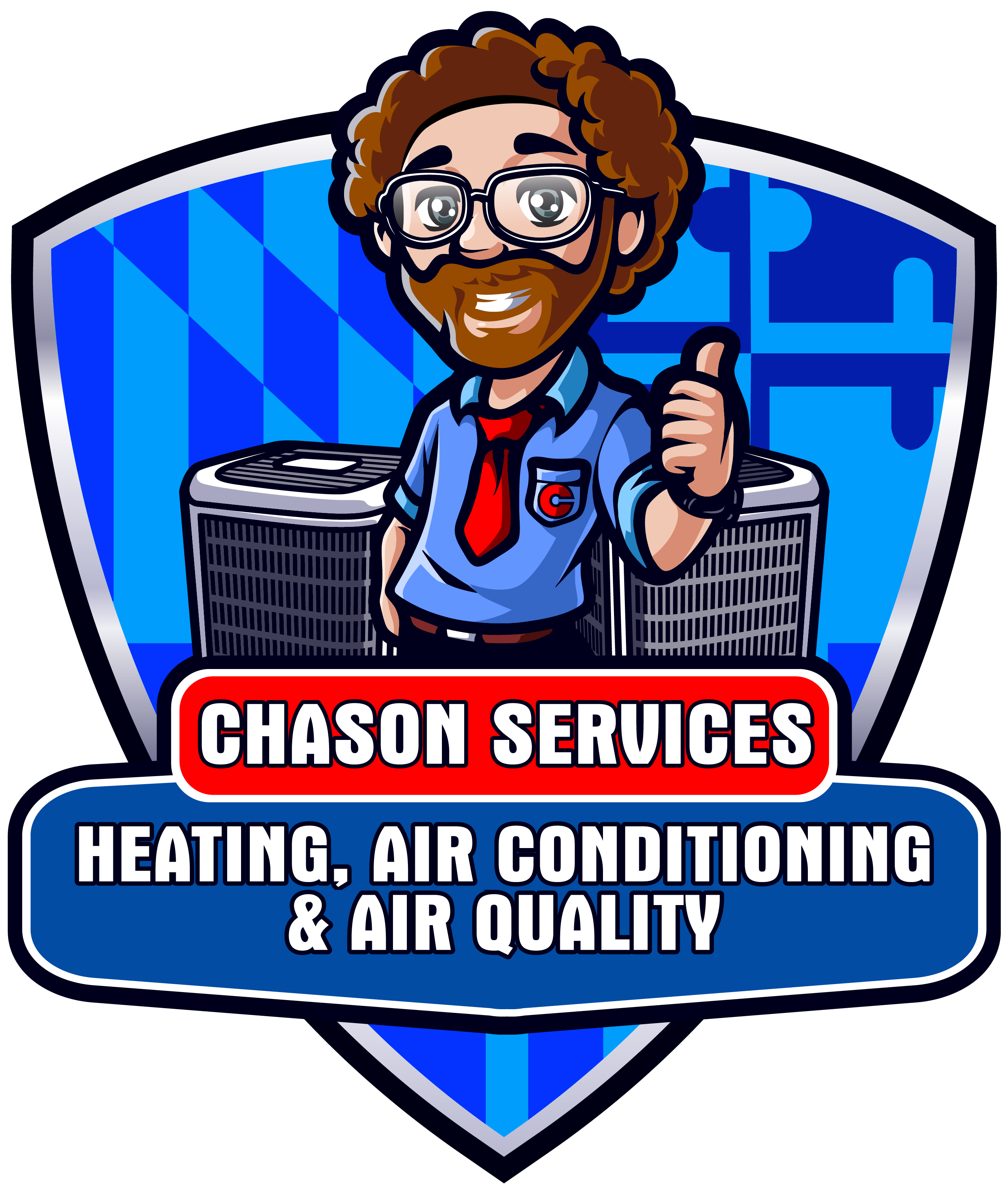As summer temperatures rise in Timonium, MD, ensuring your air conditioning system runs smoothly becomes a top priority. One common issue that can disrupt your cooling system’s efficiency is a clogged AC drain line. Understanding the causes and solutions for this problem can help you maintain a comfortable and efficient home. This article will explain why AC drain lines get clogged, how to fix them, and how Chason Service can assist you in keeping your system in top shape.

Answering The Question: Why is my AC Drain Line Clogged and How to Fix It?
Signs the AC Drain Line is Clogged
A clogged AC drain line can cause a variety of problems. Here are some telltale signs that your drain line might be blocked:
- Musty, moldy smell: A musty odor near your indoor unit or coming from the air vents can indicate mold or mildew due to standing water in the drain line. This smell is not only unpleasant but can also be harmful to your health if left unaddressed.
- Standing water: If you notice water pooling near the indoor unit, it’s a clear sign of a clogged drain line. This standing water can lead to mold growth and other water damage issues within your home.
- Water damage: Look for water stains or damage around your indoor unit. Water damage can extend to floors, walls, and even the structural integrity of your home if not dealt with promptly.
- AC system issues: Your AC may not cool your home effectively or might shut down completely if the drain line is clogged. This can lead to uncomfortable indoor temperatures and increased energy bills as your system struggles to maintain the desired temperature.
If you notice any of these symptoms, it’s important to address the issue promptly. Let’s look at how to fix a clogged AC drain line.
How to Clean an AC Drain Line
Cleaning an AC drain line is a task best handled by a qualified professional. Here’s what to expect when your HVAC technician arrives:
Step 1: Power Off the Air Conditioning Unit
For safety reasons, your HVAC technician will turn off the power to the air conditioning unit before starting any work. This protects both the technician and your system from additional damage.
Step 2: Check the Drain Pan
The technician will locate the drain pan and check for standing water. If water is present, it will be removed with rags or a wet vacuum. The technician will thoroughly clean the dry condensate pan to prevent mold growth. Cleaning the drain pan is essential to ensure no residual water remains that could cause future clogs.
Step 3: Unclog the Condensate Drain Line
After removing any visible debris from the drain or drain pipe opening, the technician will use suction from a shop vacuum or wet vac to clear the clog. They might also use a garden hose or plumber’s snake to remove the blockage. If successful, they should find a dark mass that was suctioned or pushed out of the drain line. They will test the line by pouring a small amount of clean water through it to ensure it flows out properly. This step ensures that any buildup is thoroughly removed and the drain line is clear.
Step 4: Clean the Drain Line
Once the blockage is cleared, the technician will clean the drain pipe with a commercially available cleaner designed for PVC piping. They may also recommend pouring a cup of distilled vinegar into the drain line occasionally to keep it clean between routine maintenance calls. Regular cleaning helps prevent future clogs and maintains the efficiency of your AC system.
Step 5: Finish Up
After cleaning and testing the drain, the technician will reassemble any parts, restore power to the system, and ensure everything is functioning correctly. They will also perform a final check to confirm that the system is running efficiently and there are no leaks or other issues.
DIY Methods to Unclog Your AC Drain Line
While it’s always best to have a professional handle AC issues, there are a few DIY methods you can try if you’re comfortable doing so:
- Use a Wet/Dry Vacuum: A wet/dry vacuum can be effective for removing solid debris lodged in the drain line. Attach the vacuum to the end of the drain line and create a seal. Turn on the vacuum to suction out the clog. This method works well for visible clogs near the opening of the drain line.
- Vinegar or Bleach: Pouring one cup of white vinegar or bleach down the drain line can help break down algae and other deposits. Let it sit for about 30 minutes before flushing the line with water. This natural cleaning method can help maintain the drain line between professional cleanings.
- Flush with Water: Attach a garden hose to the drain line and gently flush it with water to push out any debris. Ensure the water pressure is not too high to avoid damaging the line. This method helps dislodge any buildup and clear the drain line.
- Plunger Method: Using a plunger can sometimes dislodge clogs near the opening of the drain line. Create a tight seal around the drain line opening and plunge gently. This method is less effective for deeper clogs but can help with minor blockages.
How to Prevent Clogged AC Drain Lines
Preventing clogs in your AC drain line involves regular maintenance and simple precautions:
Clean or Change Your AC Filters Frequently
Change your AC filter every three months, or more often if you have pets or high levels of dust and pollen. Clean filters prevent dust from entering the system and help your AC run efficiently.
Check Your AC Drain Pan and Drain Line Regularly
Regularly inspect the drain pan and drain line to ensure they are functioning properly. The drain pan should be dry and free of debris. The drain line should look and smell clean, and the water coming out of it should be clear. If water backs up in the drain pan, it’s time to contact an HVAC specialist.
Schedule Regular AC Maintenance
Regular maintenance is crucial for preventing clogged drain lines and other issues. Schedule maintenance with a licensed professional twice a year, in spring and fall. This should include a system-wide inspection and cleaning, coolant level checks, thermostat testing, and ductwork inspections. Routine maintenance helps identify and address potential issues before they become major problems, ensuring your system runs efficiently.
Install a Safety Switch
A safety switch can be installed to shut off your AC system if the drain line clogs and water backs up. This prevents water damage and alerts you to the issue before it becomes a bigger problem. Ask your HVAC technician about installing a safety switch during your next maintenance visit.
Contact Chason Service Today for HVAC Repair Services in Timonium, MD
Dealing with a clogged AC drain line or any other HVAC issue? Don’t wait until it becomes a major problem. Contact Chason Service today. Our experienced technicians in Timonium, MD, are ready to help you keep your home comfortable and your air conditioning system running smoothly. At Chason Service, we understand the importance of a reliable cooling system, especially during the hot summer months. We offer comprehensive HVAC repair and maintenance services to ensure your system operates at peak efficiency.
Call us now to schedule an appointment and let our professional team take care of all your HVAC needs. Experience the peace of mind that comes with knowing your home is in the hands of trusted experts. Contact Chason Service today and enjoy a cool, comfortable home all summer long!
